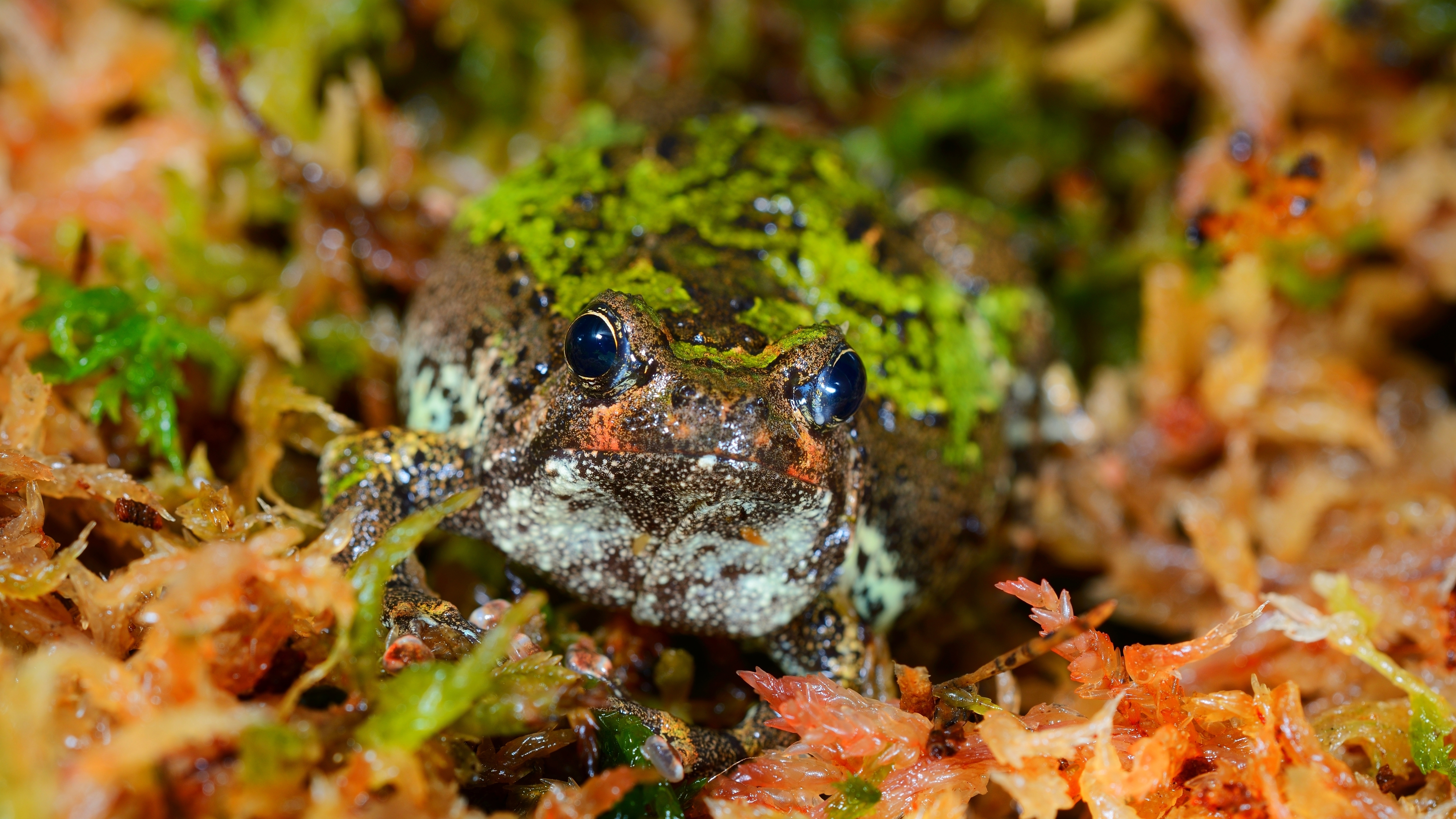Malagasy rainbow frog
(Scaphiophryne gottlebei)

Description
Scaphiophryne gottlebei, commonly known as the Malagasy rainbow frog, ornate hopper, rainbow burrowing frog, red rain frog or Gottlebe's narrow-mouthed frog, is one of the most highly decorated frogs from Madagascar. The primary threats to this endangered species are habitat loss and capture for the pet trade (now illegal). The Malagasy rainbow frog is a small, roundish, brightly coloured species with a distinctive white, orange–red, green and black pattern on the back, each area of which is clearly delineated. The skin on the back is very smooth, but that of the grey belly is a little bit rough. The snout is rounded, the eyes are prominent but the tympani are inconspicuous. The limbs are short and robust and the digits of the hand have large tips and the hind feet are webbed. Adapted for both underground and climbing lifestyles, the Malagasy rainbow frog has horny tubercles on the underside of the hind feet to help with burrowing, and claws on the forefeet for clinging to vertical canyon walls. With a snout–vent length of 2.6 to 4 cm (1.0–1.6 in), females average larger and reach a larger maximum size than males which measure 2 to 3.4 cm (0.8–1.3 in). The Malagasy rainbow frog is endemic to the Isalo Massif at an altitude of 700–1,000 m (2,300–3,300 ft) in the central part of southern Madagascar, including the Isalo National Park and areas south of it. Its primary habitat is narrow canyons where the conditions tend to be cool for the tropics, relatively dark (resulting in little or no vegetation) and very humid. The typical temperature in its habitat is 19–22 °C (66–72 °F), but overall varies from about 13 to 35 °C (55–95 °F). It shares its range with another colourful and endangered frog, the blue-legged mantella (Mantella expectata), which occurs in the same habitat but prefers more open, sun-exposed areas. The Malagasy rainbow frog digs into the sandy areas bordering the streams or spends its time in small holes or crevices in the rock walls. At night it may climb on the rock walls, reaching several meters high.
Taxonomic tree:







